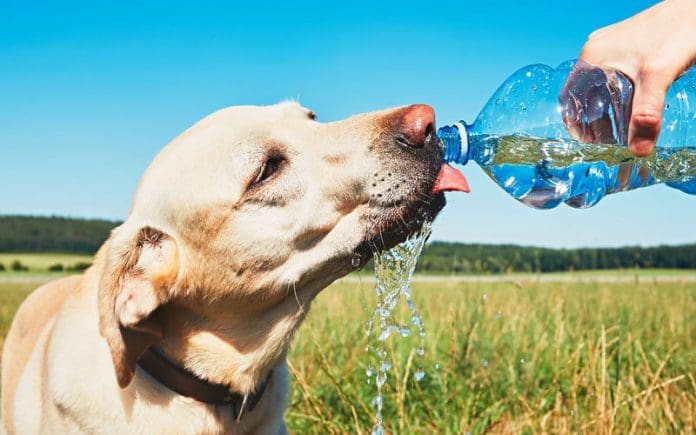With the forecast calling for temperatures to soar in the coming days, ensuring the safety and comfort of our pets becomes a top priority. High temperatures can pose serious health risks to animals, including heat stroke, dehydration, and burns. Here are some essential tips to keep your pets safe during the hot summer months.
Hydration is Key
1. Always provide fresh water: Ensure that your pets have access to clean, fresh water at all times. Consider placing multiple water bowls around your home and garden to encourage regular drinking.
2. Use ice cubes: Adding ice cubes to your pet’s water can help keep it cool for longer periods. Some pets even enjoy playing with or chewing on ice cubes, which can help keep them entertained and cool.
Protect from the Sun
3. Shade is essential: Make sure your pets have access to shaded areas, whether they are indoors or outdoors. Use umbrellas, canopies, or trees to provide a cool retreat from the sun’s rays.
4. Avoid peak hours: Limit your pet’s outdoor activities during the hottest parts of the day, typically between 10 a.m. and 4 p.m. Early mornings and late evenings are better times for walks and play.
5. Pet-safe sunscreen: Apply pet-safe sunscreen to areas with little fur, such as the nose, ears, and belly, especially if your pet has light-colored fur or thin coats.
Temperature Control
6. Never leave pets in cars: A parked car can become dangerously hot in minutes, even with the windows cracked. Never leave your pet unattended in a vehicle.
7. Cool environments: Keep your home cool with fans or air conditioning. You can also use cooling mats or vests specifically designed for pets to help them regulate their body temperature.
8. Grooming: Regular grooming helps remove excess fur that can trap heat. However, avoid shaving your pet’s coat completely, as fur also provides protection from sunburn.
Exercise and Activity
9. Adjust exercise routines: During hot weather, reduce the intensity and duration of your pet’s exercise. Opt for shorter walks and less strenuous activities to prevent overheating.
10. Paw protection: Hot pavement and sand can burn your pet’s paws. Walk your dog on grass or provide protective booties for their feet.
Recognize Signs of Heat Stress
11. Know the symptoms: Be aware of the signs of heat stroke and dehydration, which include excessive panting, drooling, lethargy, vomiting, and uncoordinated movements.
12. Immediate action: If you suspect your pet is suffering from heat stroke, move them to a cool area, offer water, and apply cool (not cold) water to their body. Seek veterinary care immediately.
Special Considerations for Different Pets
13. Cats: Ensure indoor cats have plenty of water and a cool place to rest. Outdoor cats should have shaded areas and the option to come indoors during extreme heat.
14. Small animals: Rabbits, guinea pigs, and other small pets are particularly vulnerable to heat. Keep their enclosures in a cool, shaded area and provide fresh water and cool surfaces.
15. Birds: Ensure birds are kept out of direct sunlight and in well-ventilated areas. Mist them with water occasionally to help them stay cool.
By following these tips, you can help your pets stay safe and comfortable during the summer heat. Remember, their well-being depends on your vigilance and proactive care. Enjoy the summer with your furry, feathered, or scaly friends while keeping them protected from the heat!






